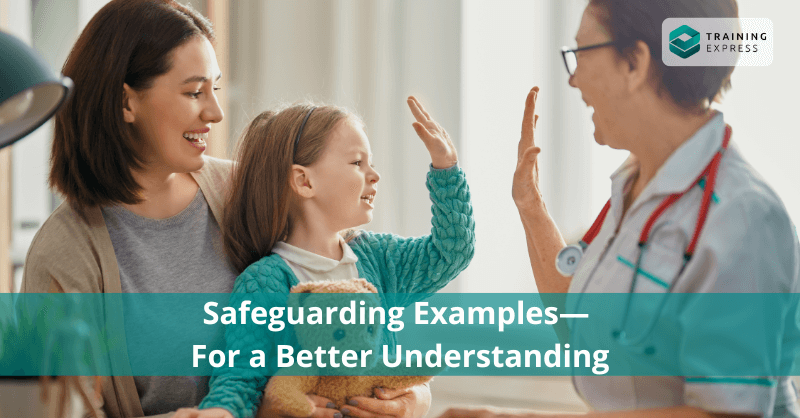
Several years ago, there was news that seven adults died due to self-neglect on the Isle of Man. This incident raised a lot of safeguarding concerns. In addition, it emphasises the utmost necessity of protecting vulnerable people. So, we’ll discuss some examples of safeguarding for your better understanding of vulnerable people and the safeguarding work itself.
Table of Contents
What is Safeguarding?
Safeguarding is the term used to describe taking care of vulnerable people in the UK. Vulnerable adults cannot take care of themselves. In addition, children are defenceless against abuse. Therefore, they need proper care and protection. Examples of safeguarding can be a child under your supervision or an older adult unable to walk; both require safeguarding.
What is Adult Safeguarding?
Adult safeguarding protects a vulnerable adult’s right to live safely, free from abuse and neglect. In addition, it shields adults who require care and support from injury and lowers their risk of abuse or neglect.
Wherever you can, you must stop abuse or neglect. In the meantime, protect vulnerable adults in a way that encourages their ability to make decisions and exercise control over their lives. In addition, advocate for strategies that should focus on enhancing the quality of life for the affected adults.
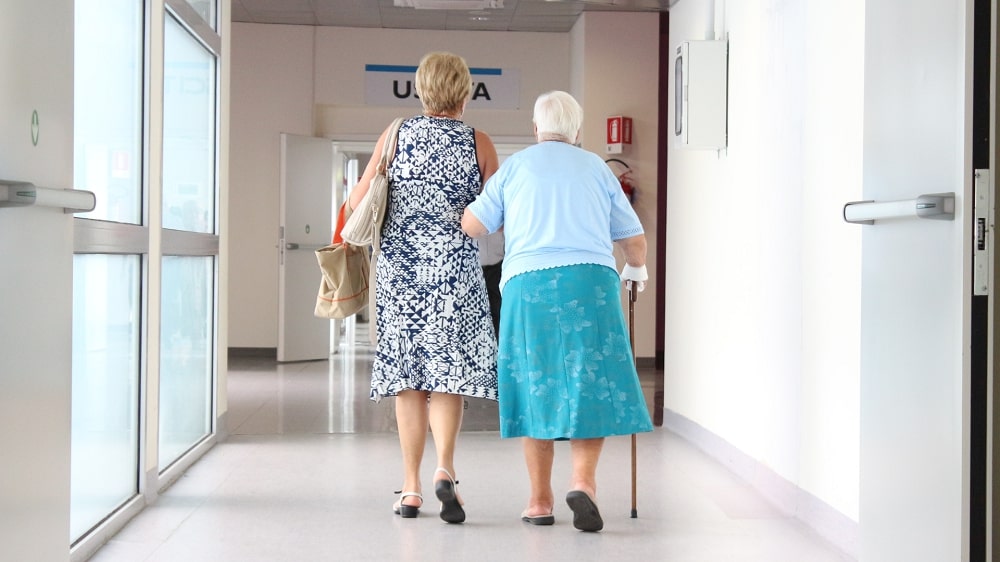
Also, it’s crucial to increase public awareness. As a result, with professionals, communities will be responsible for preventing, identifying, and reacting to abuse and neglect. Finally, make information and support easily accessible. It will help an individual learn about the many forms of abuse.
People will know how to keep safe and what to do if they have concerns about an adult’s safety or well-being. Also, address the root of the abuse or neglect.
What is Child Safeguarding?
Child safeguarding protects all children from purposeful or unintentional activities that put them in danger. Also, the absence of safeguarding can result in discomfort and damage. It engages children, their families, communities, and all stakeholders consistently and meaningfully.
In addition, child safeguarding aims to establish and preserve a safe culture that is child-focused and community-driven. Any group working with children must be committed to protecting the children. Report and take action whenever a concern arises. However, you must try to prevent damage and abuse to eliminate dangers in the first place.
Why is Safeguarding Important?
Safeguarding is crucial for defending vulnerable people from injury, abuse, and neglect. Failure to uphold your safeguarding obligations may cause someone’s suffering to continue. In addition, safeguarding helps you identify the warning signs of abuse and notify the appropriate authorities in time to assist victims.
Healthcare professionals frequently encounter vulnerable adults. They are prone to illnesses and accidents and vulnerable to crises. Therefore, they often need health or social care services. In addition, some people are inclined to self-abuse or self-neglect.
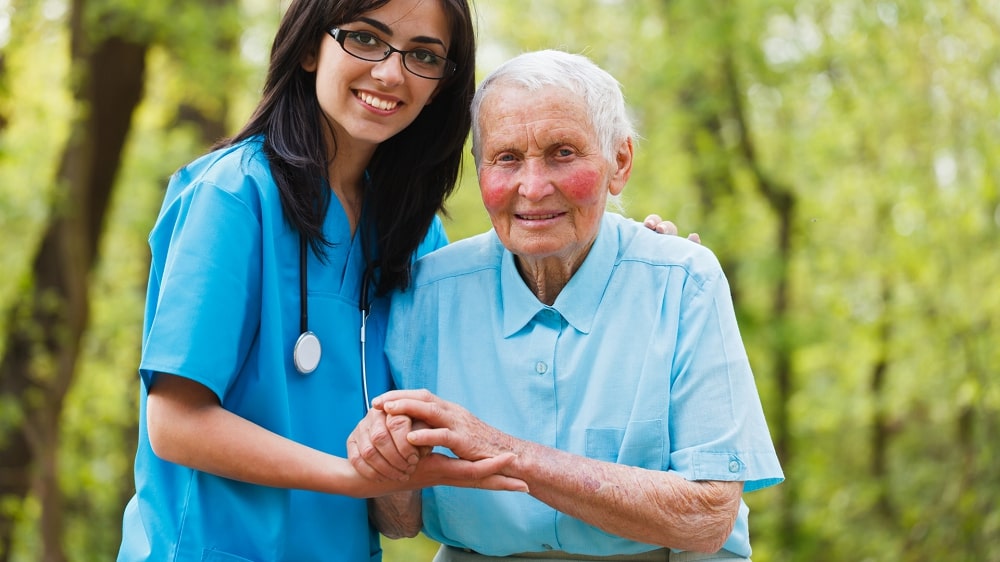
Carers can confidently handle these circumstances if they have a solid understanding of the laws for responding to safeguarding issues.
Safeguarding is paramount in schools. In schools, children grow, act, and interact with other children or school staff. As a result, they are more likely to face unexpected physical or psychological abuse. However, teachers can use their unique position to safeguard children from the risks they face inside and outside of the classroom.
Who Needs Safeguarding?
Vulnerable people who face abuse and neglect and cannot defend themselves are eligible for safeguarding support. Safeguarding services can help even if they don’t qualify for other social care. A person needing safeguarding possesses one or more of the following characteristics.
- They are vulnerable adults or children.
- They are frail due to illness.
- They have learning or physical disabilities.
- They are dealing with cognitive impairment.
- They have sensory impairments.
- They require mental health needs like dementia or a personality disorder.
- They misuse drugs or alcohol.
- They face abuse or neglect.
- They lack the mental capacity to make decisions.
Lorem ipsum dolor sit amet, consectetur adipiscing elit. Ut elit tellus, luctus nec ullamcorper mattis, pulvinar dapibus leo.

What are Safeguarding Issues?
Safeguarding issues may arise in different circumstances. For example, a child or young person lives in conditions with possible maltreatment. Then, it is a child or young person safeguarding issue (physical, sexual, emotional, or neglect). In addition, an issue may occur when a young person poses a high risk of causing severe harm to others.
Safeguarding issues appear when vulnerable adults face financial abuse. Financial abuse involves squandering, withholding, or stealing someone else’s money. Also, an individual may face domestic violence, such as pushing and hitting.
Safeguarding issues also emerge when vulnerable people are in danger of neglecting themselves in their homes. However, a person may also be at risk of neglect in a care facility. Neglects may involve not receiving essential food, medication, or care.
Also, children are vulnerable to emotional abuse like bullying or humiliation. Therefore, it raises safeguarding issues when they face such situations.
Examples of Safeguarding in the Workplace
Workplaces demand safeguarding due to the possibility of bullying and harassment. Ruth Namie, a clinical psychologist, had to deal with bullying and sexual harassment (true story). She was victimised by workplace bullying at a mental health facility. Yes, that’s right—another mental health worker was the bully. Such harassment in the workplace arrives unsolicited, unearned, and unwanted.
Bullying at work can hurt both your emotional and physical health. Some possible repercussions include extreme stress, anxiety, sadness, trauma, high blood pressure, digestive problems, and more. That’s why diverse examples of safeguarding will allow you to understand the issues and responsibilities properly.
Examples of Safeguarding in Schools
Leonard is a well-liked student who belongs to a group of friends. In addition, the school has welcomed Smith as a new student. You notice that the two have spent much time together, apart from Leonard’s typical circle, in the past month.

1. Safeguarding Concern
After class, Amelia, one of the females from Leonard’s previous friendship circle, came up to you and expressed some concerns. She claims that she attempted to ask Leonard why he had abruptly severed all communication with the group. But he became agitated and hostile. Leonard reportedly said that Smith had helped him with his problems, and everyone else was ignorant of his suffering. Amelia thinks both of them are involved in substance use. However, Amelia also thinks Leonard is facing mental health issues.
2. Your Observation
Amelia may be just mad at Leonard for leaving the group. However, it would be best to take Amelia’s assertion seriously, even though you haven’t personally seen Leonard taking anything harmful. Some potential behavioural signs of substance abuse should be familiar to you already. It includes drifting away from social life, arguing, shouting, and neglecting one’s safety.
3. Your Action
First of all, gather all the information regarding this issue. Next, think of the household environment of Leonard. Does his parent possess an addiction problem? Also, note if he’s facing abuse at home. Often young people build addictions to forget household abuse or neglect. Finally, identify if Leonard’s facing depression or similar mental health issues.
When you understand the overall situation, inform the local authority, children’s social care services, and substance misuse services. A joint effort among them will provide sufficient help to Leonard and safeguard him from future abuse. This is one of the examples of safeguarding which shows how a safeguarding issue arises in a school.
Examples of Safeguarding in Health and Social Care
Let us look at one of the examples of safeguarding in health and social care.
Rony’s dad resides in a care home. He is sixty-five years old and has several health problems. In addition, he regularly needs to take medicines. Moreover, his health condition deteriorates if he faces mental abuse. Therefore, he prefers the privilege of making decisions and a natural routine to walk, exercise and relax.

1. Safeguarding Concern
Rony doesn’t frequently visit her father. However, she discovered a strange occurrence during her most recent visit. She overheard a caregiver yelling and threatening some service users if they didn’t behave. She is now worried that her father might face that too. In addition, her dad seemed a little bit off, and his health was not improving either.
2. Witness’s Action
As a witness of lousy behaviour, Rony first tried to find a solution by informally speaking with the care home. She mentioned that specific carer and their ill behaviours. In addition, Rony tried to be as explicit as she could about what happened.
However, it didn’t work. The agency thought Rony was being dramatic, and she had no reason to worry. Therefore, Rony submitted a formal complaint and requested a copy of the agency’s complaints procedure, which they’re obligated to have.
Finally, Rony is considering contacting the Local Government and Social Care Ombudsman if her complaint doesn’t work.
3. Additional Information
In the events like this, you can notify the Care Quality Commission. It oversees social care services in the UK. However, they may not immediately assist you. But they might decide to look into the carer or impose changes.
Examples of Safeguarding in Hospitals
Safeguarding issues are common in hospitals. Examples of safeguarding will demonstrate how.
Jane is a relative of you. She has been hospitalised due to arthritis. In addition, she has mild autism. The doctor has suggested an operation to improve her condition.

1. Safeguarding Concern
After Jane’s admission, you visited the hospital. However, you noticed a bruise on her hand. In addition, she complained about the hospital’s services. She claimed one of the nurses behaved roughly with her.
2. Hospital’s Duty
In hospitals, adult patients may be more vulnerable to harm due to their health issues or disabilities. Hospital staff must receive specialised training on protecting adults. Therefore, contact the Safeguarding Adults Team of the hospital to express your suspicions of abuse.
The Safeguarding Team must take care of such situations. Employees will deliver high-quality care to address safeguarding issues. In addition, each employee must provide a quick reaction when harm or abuse does occur.
3. Your Action
Seek help from other organisations, such as the police and social services, if you think the hospital doesn’t guarantee the safeguarding of its patients.
Examples of Safeguarding Adults
Let’s see one of the examples of safeguarding to protect vulnerable adults.
Your most adjacent neighbours are an elderly couple— Masha and David. They both are more than fifty years old. However, Masha has some disabilities. She finds simple problems challenging to handle. She also possesses a rare genetic disorder that makes some of the daily tasks harder for her to perform.
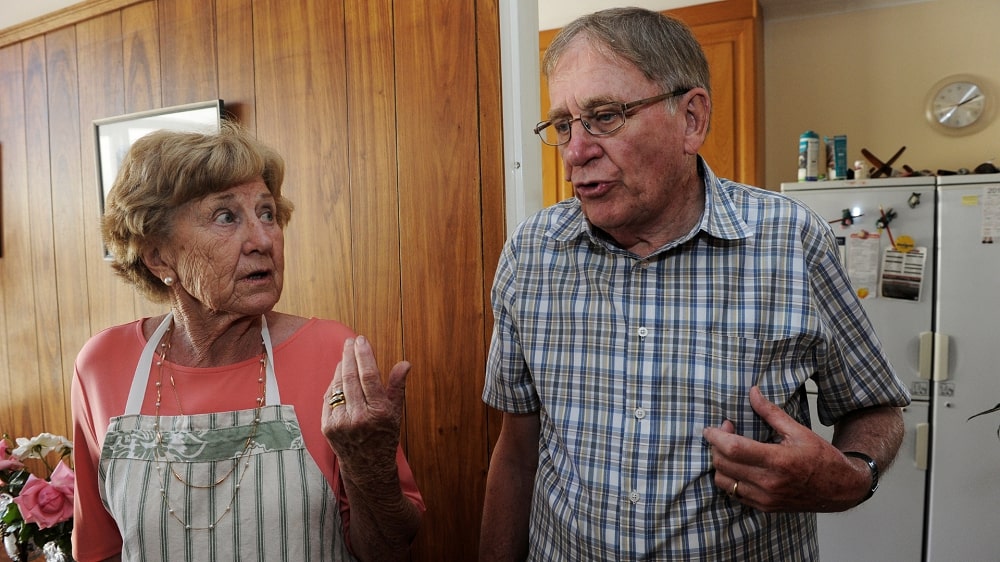
1. Safeguarding Concern
You frequently hear David and Masha fighting. It’s a daily routine. You thought this is how their married life has been. However, one day you overheard Masha sobbing. You are aware of the disabilities of Masha. You think David is abusing Masha physically, probably hitting her during their quarrel.
2. Your Action
There are protocols to safeguard adults who are subjected to abuse or neglect. You can contact the local authority as they are responsible for taking the necessary steps. Depending on the severity of the abuse, the local Safeguarding Adults Board and local commissioners may receive it from the local authority. For these arrangements to be effective in a given area, local authorities and other local agencies must agree.
3. Additional Information
If a local authority receives a report of a safeguarding issue, it is required to investigate the situation. Then, it’ll determine what, if any, additional steps it should take. The local authority must be confident that the service provider is responding appropriately. In addition, it may be necessary to conduct its investigation and supervise any subsequent actions.
For instance, it can suggest that the service provider notify the Disclosure and Barring Service or the Care Quality Commission. All in all, there should be a detailed record of every decision and action.
Take our Safeguarding Vulnerable Adults Training Course to get better skilled in safeguarding adults.
Examples of Safeguarding Children
One cannot but understand examples of safeguarding children and young people. Let’s look into one.
A father has slapped his nine years old daughter. When the father arrived at school to pick her up, he was shouting at the child. Then, suddenly, he slapped her. The witnesses observed this but did not make any move. You’ve got this information as a school employee and tried connecting with the child. However, the child hasn’t discussed it with anyone, including you. In addition, the family of the child is from a different culture.

1. First Things First
You must not expect a child or young person to immediately inform you that they are the victim of abuse. In addition, you shouldn’t let concerns about cultural sensitivity get in the way of securing and defending the welfare of children. Most importantly, your organisation should have clear policies on what you’re expected to do in such events.
2. Your Action
Primarily, try to reach the designated child protection lead or safeguarding lead and their deputy in case of an emergency. In addition, don’t discuss your concerns with anybody else but the designated leads.
When reacting to and documenting concerns, it’s crucial to distinguish between fact and opinion. When taking notes, distinguish between facts and what you’ve heard from other people, and specify the source of information.
3. Support
Children who have been abused or who are in difficult situations require support. Assure they have someone to talk to and inform them that they can call Childline anytime for free, private help. Furthermore, contact the proper authorities and mention the incident.
Identifying problems is as crucial as communicating with the right people. In addition, early intervention can help save children and young people from danger.
Ensure all employees and volunteers are aware of and comfortable with your organisation’s safeguarding rules and procedures. However, the induction procedure for your organisation needs to include a significant amount of child protection training, if they work with children. To enhance your safeguarding expertise, take our Safeguarding Children – Level 2 Course.
Examples of Safeguarding Measures
There are hundreds of measures to ensure the safety of vulnerable people. We will discuss a few examples of safeguarding measures to help you decide what you can do.
Safeguarding Campaigns
Many people participate in campaigns to stop the abuse. Campaigns –
- offer helpful information,
- educate the general public,
- inform those who work with children and families,
- and operate a free, confidential helpline.
The programmes encourage the participation of people of any age in the prevention of abuse and neglect.
Using the Internet
The internet is a helpful tool with information and resources. You can use it to educate people about vulnerability and abuse. In addition, you can address concerns. Also, searching the internet can give people a lot of knowledge, suggestions, encouragement, and facts.
Small Talks
Encourage discussions in the family or the workplace about
- gender and sexual diversity,
- oppression,
- boundaries,
- consent,
- child abuse,
- disability,
- situations vulnerable adults face,
- emotions,
- relationships,
- and self-esteem.
Activities to Empower Vulnerable People
Human beings have the desire to take risks in life. In addition, they want to exercise their complete control over specific things. Vulnerable people must have freedom too. However, things can occasionally go wrong if you forget to put proper safeguarding in place.
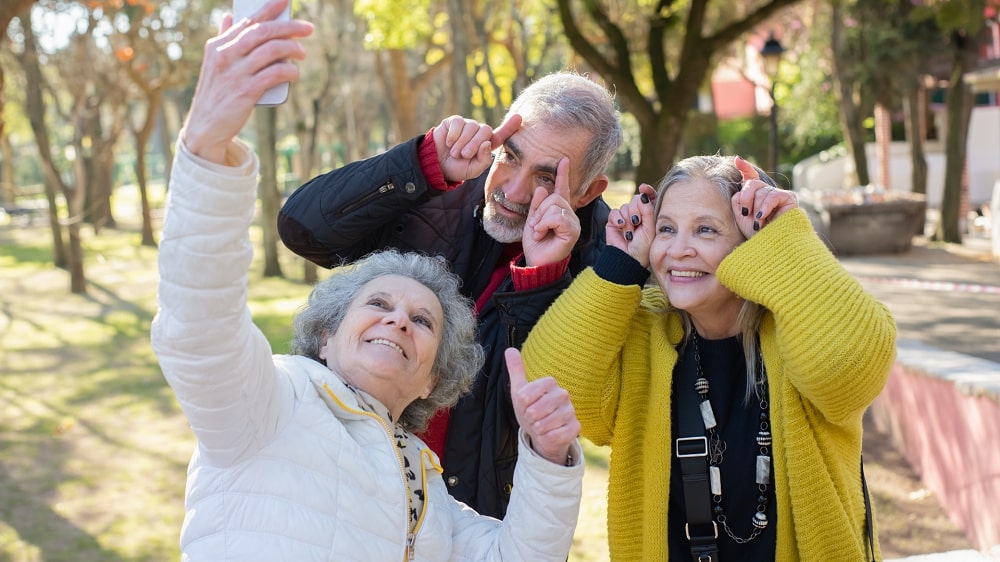
As carers/ providers/ parents/ nurses/ volunteers/ social workers, it’s our responsibility to
- successfully manage risks,
- maintain the safety of vulnerable people,
- and promote the empowerment of vulnerable people.
We can help vulnerable people navigate life’s dangers and difficulties by empowering them with fun and learning activities.
What to do When a Child Makes a Safeguarding Disclosure?
When a child makes a safeguarding disclosure, be attentive and patient. In addition, avoid expressing your emotions at first. If you act astonished or disbelieving, they may stop talking and retract.
You can show them Childline’s letter builder if they can’t talk. It helps individuals express their thoughts and feelings with easy prompts.
In addition, try to negate the guilty feeling in them. Tell them it’s not their fault. Children sometimes conceal the abuse out of fear of being belittled. Therefore, assure them you’ll listen and support them.
However, it would be best if you didn’t face the alleged abuser. Confronting the accused abuser may worsen the child’s predicament. Instead, pass the knowledge to a safeguarding team or the proper authority ASAP. For young people, explain to them that you’ll need to report the abuse to the authority.
Listen, report, and treat child abuse seriously. To keep children secure, you must act. If you are aware of child abuse, refer it to the National Society for the Prevention of Cruelty to Children (NSPCC) immediately.
What is the Difference Between Child Safeguarding and Child Protection?
Society practises safeguarding to protect vulnerable people from abuse, neglect, and sexual exploitation. Safeguarding ensures everyone safe and effective care. In addition, it provides that a child has the best possible start in life. Furthermore, it assures physical and mental protection of vulnerable adults.
However, child protection is about protecting children who have already endured abuse, neglect, sexual exploitation, or injury. The two concepts are highly similar. However, remember, safeguarding is what we do to stop the abuse. In contrast, child protection is how we deal with the aftermath of abuse.
What are the Principles of Safeguarding?
There are six principles of safeguarding –
1. Empowerment
2. Prevention
3. Proportionality
4. Protection
5. Partnership
6. Accountability
Each of these principles provides unique guidance to a carer or a person who needs safeguarding. Let us understand what these principles mean with examples.
1. Empowerment
“What occurs during the safeguarding process is heavily influenced by my responses to questions about what I hope to achieve.”
2. Prevention
“Educating myself on the topic of abuse has been a straightforward experience. I’m aware of the warning signs and how to get help if I need it.”
3. Proportionality
“Those trained in this field will undoubtedly look out for my best interests and will presumably only become involved as much as is absolutely required.”
4. Protection
“To report abuse or neglect, I am given assistance and support. When I need it, I can seek assistance so that I can play a role in the safeguarding process that seems comfortable for me.”
5. Partnership
“I trust that employees will keep my private information private and will only provide assistance when asked for. I have faith in the ability of trained experts to collaborate and work with me to get the greatest possible outcome.”
6. Accountability
“Everyone’s role in my life is clear to me, and I think they do as well.”
Summary
Examples of safeguarding are crucial to understanding the very nature of abuse and neglect. In addition, the illustrations help you empathise with vulnerable people in danger of harm.
Moreover, you can execute self-made plans besides the legislation and company laws. Your plan may work better in stressful situations if you understand safeguarding and vulnerability best. Lastly, take this Safeguarding Vulnerable Adults Training course, and you’ll become skilled in safeguarding adults in no time.
- Available Courses
- Law10
- IT & Software225
- Design28
- Training6
- Accounting & Finance Primary48
- Teaching & Academics Primary36
- Teaching22
- Quality Licence Scheme Endorsed160
- Healthcare169
- Animal care10
- Job Ready Programme52
- Charity & Non-Profit Courses28
- HR & Leadership4
- Administration & Office Skills2
- Mandatory Training36
- Regulated Courses4
- Health and Safety520
- Marketing38
- Career Bundles201
- Construction59
- Electronics31
- Hospitality28
- Health and Social Care289
- Child Psychology40
- Management423
- Business Skills292
- First Aid73
- Employability283
- Safeguarding79
- Food Hygiene116
- Personal Development1597

 Food Hygiene
Food Hygiene Health & Safety
Health & Safety Safeguarding
Safeguarding First Aid
First Aid Business Skills
Business Skills Personal Development
Personal Development